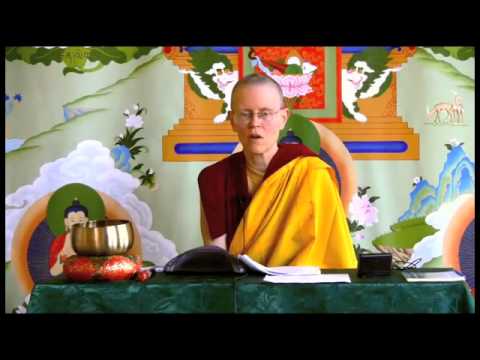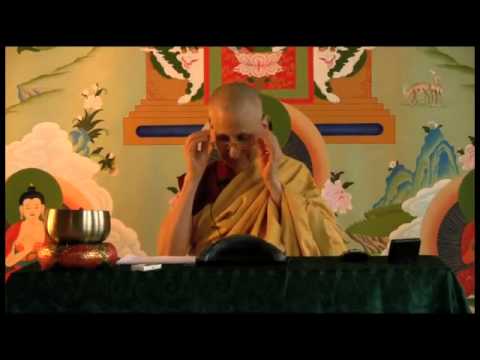Cultivating serenity in daily life
Cultivating serenity in daily life
Venerable Thubten Chodron teaches how to bring samatha or serenity meditation into our practice and cultivate it, even with a normal, non-retreat lifestyle.
Addressing a lay practitioner’s question
Somebody has written in with a question: “I don’t live near a Dharma Center but nonetheless have a committed lay practice. I have a household to manage, but still have from two to three hours a day, not all at once, for my Dharma practices—which include watching your video teachings and the BBC, reading texts, and meditation practice. My greatest concern is the quality of my meditation practice. Based on recommendations I’ve heard and read, I have focused my meditation time on lamrim practice and am using your book Guided Meditations on the Stages of the Path. My question is this: How and when do I practice samatha, let alone all the other various meditations? How does an unaffiliated lay practitioner like myself progress correctly in their meditation practice?”
It’s a good question, isn’t it? I think this person is really off to a very good start using the CD in the meditations on Guided Meditations on the Stages of the Path because His Holiness the Dalai Lama really encourages us to do that kind of analytic meditation because it changes the way we see the world. It changes our worldview. The Buddhist worldview is really important to have in order to make sense of all the different teachings that the Buddha gave. And it’s helpful in order to be able to know how they fit together and thus how to meditate on them and how to progress along the path.
Doing a lot of Lamrim meditation is very good. People always say when they do that: “But my concentration is awful.” And samatha (or serenity) and vipassana (or insight) are also recognized as really important practices that we have to actualize to progress along the path. It’s said that samatha, our serenity, is important for all the other meditations we do because if we can’t concentrate very well it’s difficult doing other meditations.
But the thing is that when they teach samatha in the lamrim they have a list of the internal and external conditions that you have to have together in order to actually attain serenity. It’s very clear from those conditions that you have to be in a retreat situation and not speak to anybody and so on and so forth. Even this person who has the leisure of two to three hours to spend on the Dharma every day is also involved in other activities.
Sometimes we get discouraged and say, “Well, if I can’t attain serenity, then just forget it.” But I don’t think that’s the point. We may not be able to attain attain single-pointedness and complete serenity, but we can improve the quality of our meditation, and the length of it, and improve our concentration to whatever extent we can. That much does benefit our other meditations that we do.
Advice for developing serenity
At the beginning of a meditation session, after you take refuge and set your motivation, then spend a little bit of time doing the serenity meditation. Use either the breath as the object of meditation—especially the sensation in the nostrils and on the upper lip—or use the image of the Buddha as your object of meditation. If you’re doing a tantric sadhana, and you do the self-generation, then you use yourself as the deity as the object for your serenity meditation. And then you follow the instructions for developing samatha or serenity using that object. You do that for a little bit of time each day and that helps you to increase your concentration. Any bit that you increase it is good.
When you do the lamrim meditation, after you do the analytical meditation, if you have some experience from your meditation, then focus on that experience with as much concentration as you can. For example, if you’re doing the meditation on the kindness of sentient beings, and at the conclusion you have a very strong feeling of “Wow, this is amazing; I’ve been the recipient of so much kindness,” then you really hold that feeling—that experience—as long as you can. Or if you’ve done a meditation thinking about emptiness and you have some feeling for that, then you focus on that feeling or that understanding at the conclusion for as long as you can just to integrate it into your mind. Doing that also helps you to increase your serenity meditation.
In that way we develop analytic meditation and serenity meditation side-by-side. That’s good, and that way our life progresses, our practice progresses.
Venerable Thubten Chodron
Venerable Chodron emphasizes the practical application of Buddha’s teachings in our daily lives and is especially skilled at explaining them in ways easily understood and practiced by Westerners. She is well known for her warm, humorous, and lucid teachings. She was ordained as a Buddhist nun in 1977 by Kyabje Ling Rinpoche in Dharamsala, India, and in 1986 she received bhikshuni (full) ordination in Taiwan. Read her full bio.


